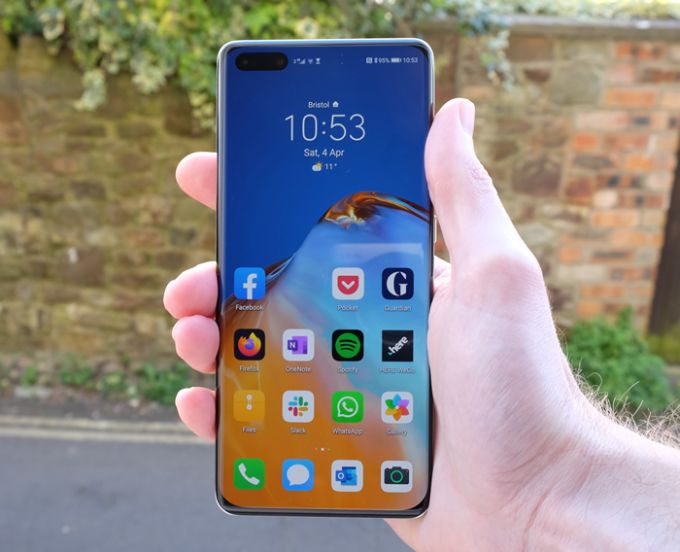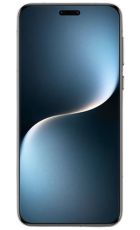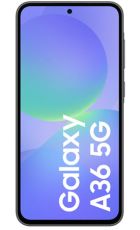Huawei has been turning out genuinely brilliant high-end smartphones for a couple of years now. The Huawei Mate 20 Pro was, to many, the best phone of 2018, while the Huawei P30 Pro was a major contender for 2019.
Now the £900 Huawei P40 Pro is here to pitch for the 2020 title, and it faces a far tougher challenge than its predecessors.
Part of that challenge comes in the form of tough opposition from the Samsung Galaxy S20 5G and the iPhone 11 Pro. But the biggest hurdle the P40 Pro has to leap comes from elsewhere entirely.
Screen
The Huawei P40 Pro’s display represents the company’s best work yet. At 6.58-inches and 1200 x 2640 (for 441ppi), it’s both bigger and more pixel-packed than the P30 Pro screen, while OLED technology provides punchy colours and deep blacks.
But the biggest upgrade to the P40 Pro display over its predecessor comes in the form of a 90Hz refresh rate. Like the OnePlus 7T before it, this produces a far silkier, more responsive interface. The Galaxy S20 recently upped the stakes to 120Hz, but this is still 50% smoother than most phone displays manage.
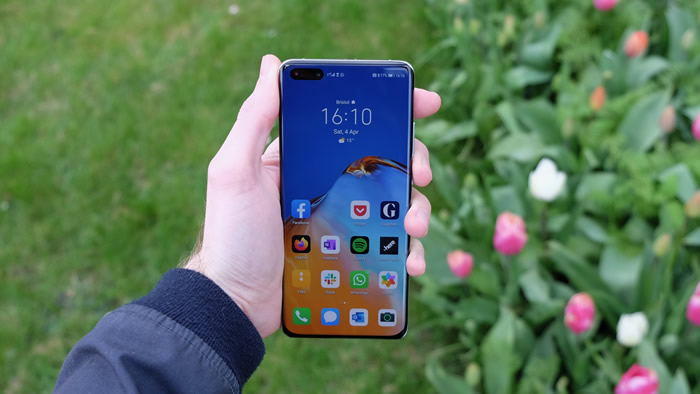
Some will find the slight distortion effect over the left and right curved edges of the P40 Pro display distracting. More importantly, we didn’t notice any accidental inputs while we were holding this edge-to-edge display.
Overall, this is a beautiful screen that shows videos, photos and games at their best.
Design
The Huawei P40 Pro is one of the most handsome smartphones on the market, right up there with the Samsung Galaxy S20. Indeed, Huawei has clearly been consulting the Samsung design playbook.
There’s that familiar edge-to-edge screen that we’ve mentioned already, which yields a 91.6% screen-to-body ratio. You’ll find tiny black borders to the top and bottom of the phone, but the left and right edges curve away like an infinity pool (and, more to the point, like previous Galaxy S phones).
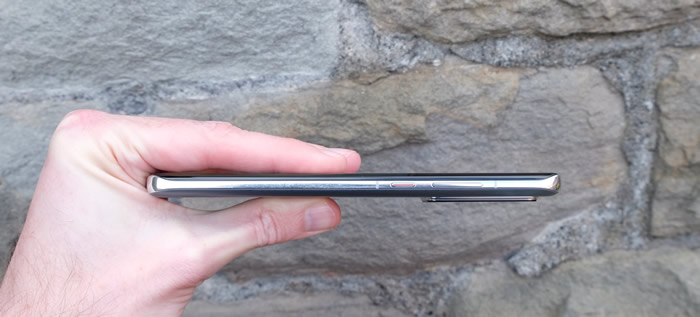
When it comes to the obligatory screen notch, Huawei has gone with an off-centre lozenge-shaped island, like 2019’s Galaxy S10+ - though here in the top left corner rather than the top right. It’s undoubtedly distracting, especially when it comes to watching or playing media, and we prefer the elegance of the P30 Pro’s dewdrop design or the Galaxy S20’s central hole punch. But you mostly get used to it.
The Samsung-esque design flourishes continue when you flip the Huawei P40 Pro over, where the positioning, configuration and shape of the camera array are incredibly similar. That is to say: they’re extremely appealing to the eye, and speak to the phone’s pro camera capabilities.
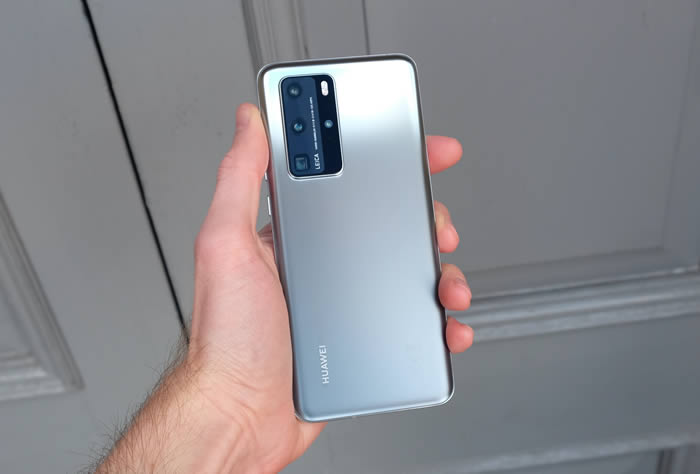
Hats off to Huawei for the absolutely delightful Silver Frost finish, which somehow feels simultaneously decadent and utilitarian. We’re huge fans.
IP68 certification means that the Huawei P40 Pro will survive water immersion to 1.5 metres for 30 minutes. That’s par for the course with flagship phones, but it confirms the kind of company Huawei is keeping these days.
Power
Crack that beautiful shell open (there’s a bundled plastic case to ensure you don’t) and you’d find a Kirin 990 CPU powering the Huawei P40 Pro. This is the latest of Huawei’s own high-end chips, and it’s the same speedy piece of silicon that powered the Huawei Mate 30 Pro towards the end of 2019.
You could nitpick about comparative performance - no, it’s not quite s fast as the Snapdragon 865 that powers the P40 Pro’s Android rivals - but in practical terms this is a very capable chip that runs everything at full whack, without compromising on battery life.
This is no doubt aided by the generous provision of 8GB of RAM. Whether you’re blasting through Shadowgun: War Games at max settings, or flicking between multiple open apps, the Huawei P40 Pro flies.
Camera
Huawei has been mixing it with the very best in photography terms for a while now, and the Leica-branded Huawei P40 Pro camera doesn’t disappoint one jot.
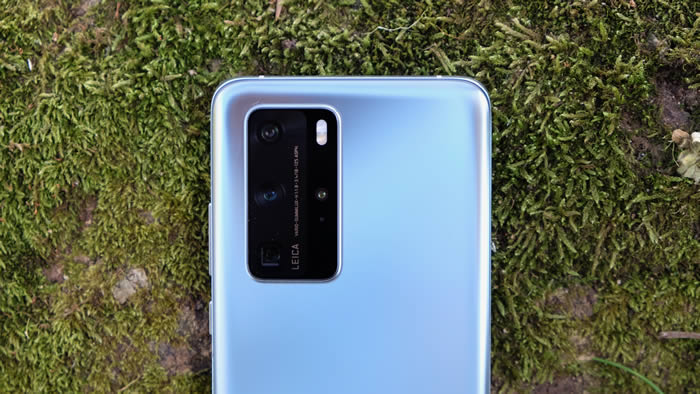
All-round performance is excellent, with bright, crisp, well-balanced shots par for the course. And that’s in a variety of conditions too, whether it’s a sunny day landscape, an indoors food shot, a selfie portrait, or a night time snap. Huawei’s optional AI assistant is very smart at identifying the shooting conditions, but we preferred the more natural tone achieved by leaving it off - a sign of how good the standard camera setup is.
The big addition to this year’s model is its zoom capabilities. Thanks to the combination of a huge 50-megapixel f/1.9 main sensor, a 12-megapixel f/3.4 ‘periscope’ telephoto sensor, a 40-megapixel f/1.8 ultra wide sensor, and a dedicated time-of-flight (TOF) 3D sensor, you can take a vast range of shots. We’re talking about punchy portraits, balanced wide-angle vistas, and zoomed in shots right up to a staggering 50x. And most of these will look great.
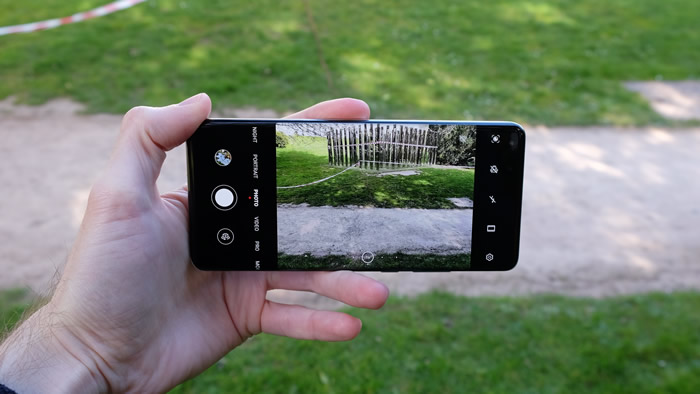
At this point we should issue one big caveat, in that the 50x shots themselves are practically unusable. It’s impossible to hold the camera still enough to keep the subject steady and centred without a tripod, and the resulting shots are extremely noisy.
But we still think Huawei’s ambitious approach was worth it here, because shots at around 5x and even 10x (which should be enough for most situations) look really good. Whether we were zooming in on a squirrel in a tree or simply getting a more interesting framing of a landscape or building, having a proficient hybrid zoom system to hand greatly increased our shooting options.
Night Mode, meanwhile, yields shots of almost freakish clarity in extremely low light conditions. Though of course Huawei isn’t alone in being able to achieve this.
Even the P40 Pro’s 32-megapixel selfie camera yielded impressive results, with plenty of light, detail and dynamic range.
Features
The Huawei P40 Pro is feature-packed, but far from feature-complete. One positive is the provision of a secure facial recognition system. Huawei is one of the few manufacturers other than Apple to be doing this properly, and it works well.
It might sound like overkill to include an in-display fingerprint sensor, but the Huawei P40 Pro does just that, and we’re glad of it. There are moments (such as when you wake up) when facial recognition simply doesn’t work out so well, and being able to fall back on a reliable biometric alternative is great.
It’s a shame to see Huawei ditching stereo speakers in the P40 Pro, though. Given that the P30 Pro had this immersive feature, it’s a definite step back for media playback.
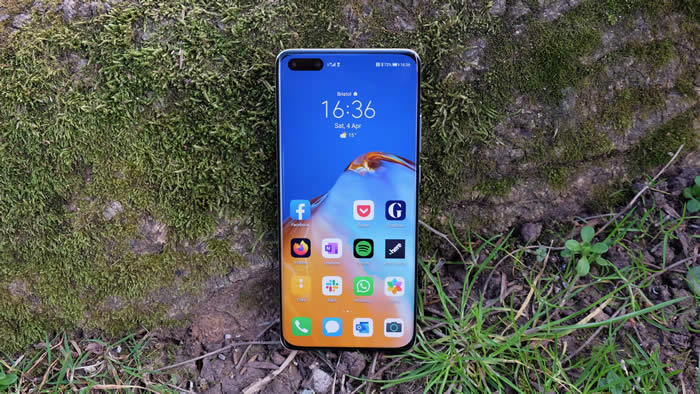
But the biggest point to note here relates to the Huawei P40 Pro’s software offering. Thanks to an ongoing spat with the US government, Huawei is banned from using Google Play Services. That means it can’t install and run any of Google’s apps, such as Gmail, Chrome, Maps, Drive, and Music.
It also means that you can’t use, or will experience issues with, a number of third party applications. The likes of Netflix, The Guardian app, and Opera all rely on Google Play Services to some extent.
Perhaps the biggest miss is the Google Play Store itself. This means you have to rely on Huawei’s own lightly populated AppGallery out of the box. We found ourselves turning to alternative app stores like Amazon AppStore and APKSource for access to everyday apps like Spotify, Facebook, Dropbox, Amazon’s suite of apps, and Slack.
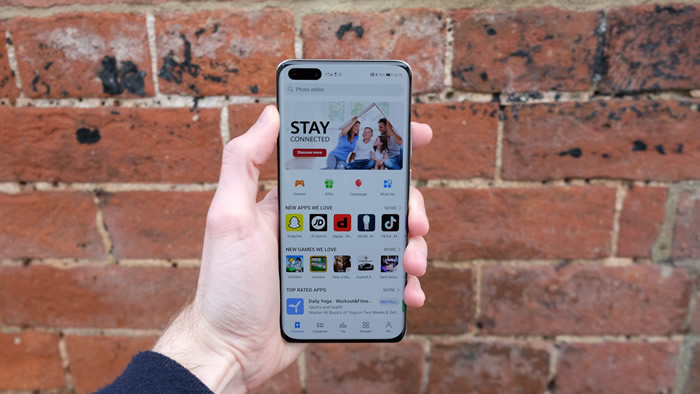
We should note that we managed to come to a fairly satisfying setup for most of our basic needs - Here WeGo for navigation, Outlook for email and calendar management, and Firefox for web browsing chief among them. But the hoops we had to jump through to get to this point, and the period of adjustment we had to go through, simply won’t be viable to a lot of people.
That aside, the Huawei P40 Pro still runs a form of Android 10, with its own EMUI interface layered on top. It’s never been our favourite UI, but at least it’s fast and reliable, and you can customise it a fair amount.
Battery life, memory and connectivity
Huawei has become quietly famous for prioritising battery life even in its most powerful phones. The Huawei P40 Pro isn’t about to let that reputation slip.
The phone comes packing a large 4,200mAh battery, and we were frequently able to get to the end of the day with around 50% remaining in the tank. There’s real potential for two days of usage in between charges here.
When you do come to recharge, the bundled 40W charger will get you back up and running extremely quickly. Alternatively, the P40 Pro can accept up to 27W wireless charging. It’ll also wirelessly charge other devices.
Elsewhere there’s 256GB of storage as standard, with the potential for memory expansion. The latter requires you to use one of Huawei’s own proprietary NM cards, but it’s a welcome provision nonetheless.
The Huawei P40 Pro comes with 5G as standard, so if you’re in an area supported by your network operator you can benefit from super-fast network speeds.
Verdict
The Huawei P40 Pro is a truly outstanding piece of hardware, with one of the most desirable designs on the market. Its performance is unimpeachable, its display fluid and vibrant, and its camera is one of the most flexible and downright accomplished to be found. The fact that it’s 5G-compatible as standard is nothing to be sniffed at, either.
There’s just one real flaw to this package, but unfortunately it’s a potentially significant one. Without support for Google’s formidable ecosystem of apps and web tools, many users will find themselves cut adrift from their favourite services. This could well prove a deal breaker unless you’re willing to try something new and put a little graft into the setup process.


